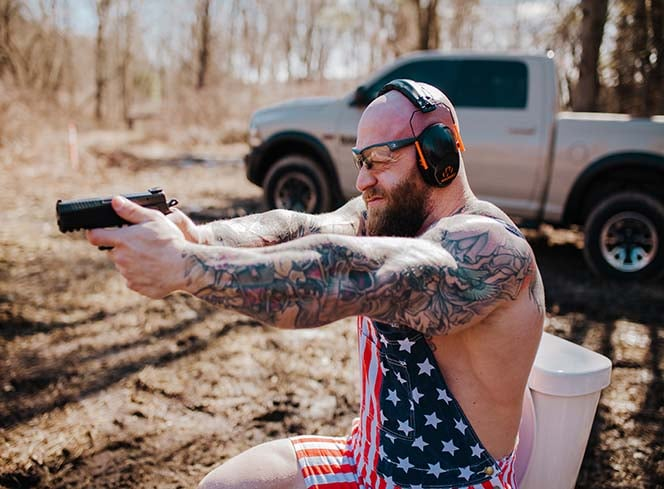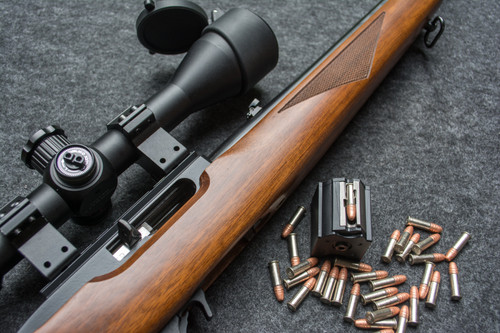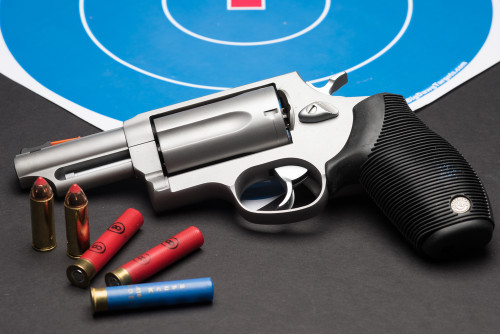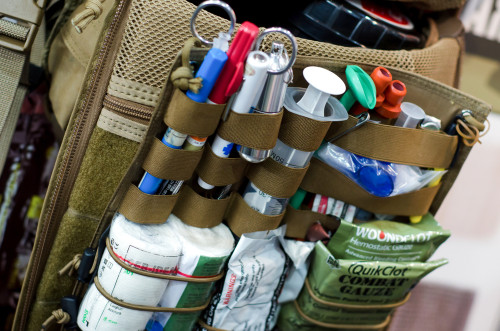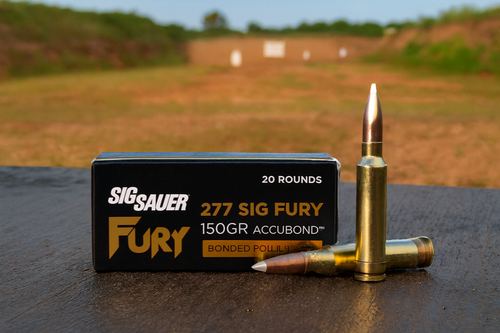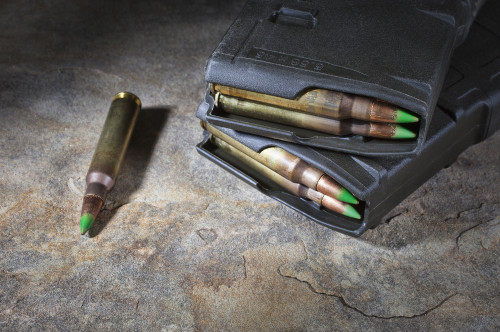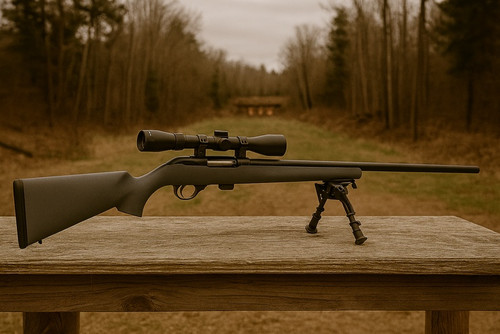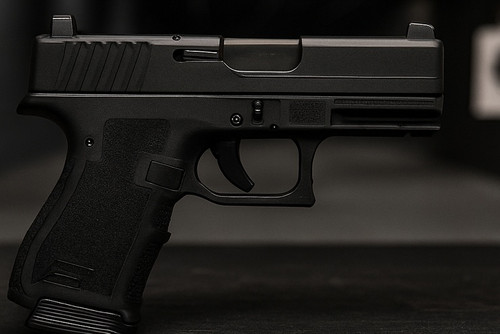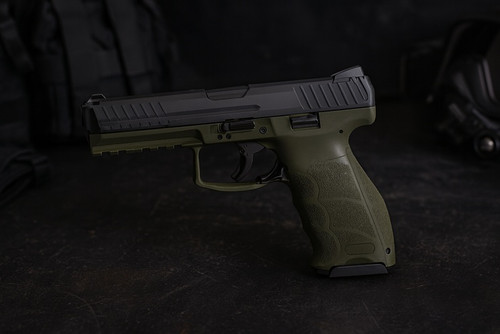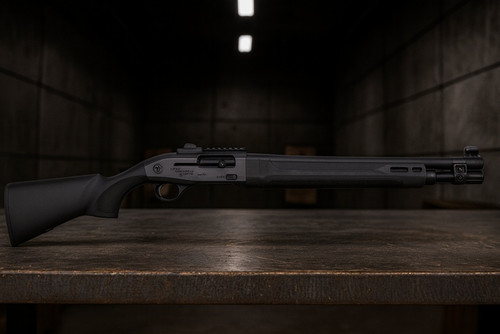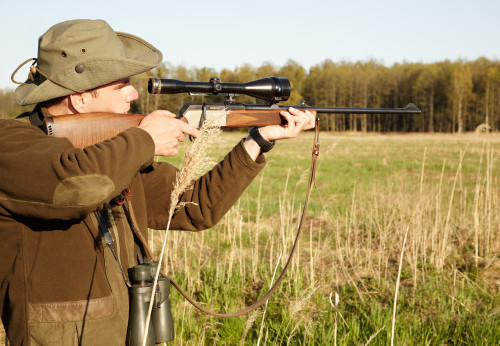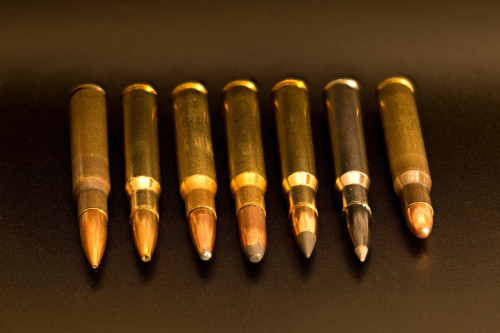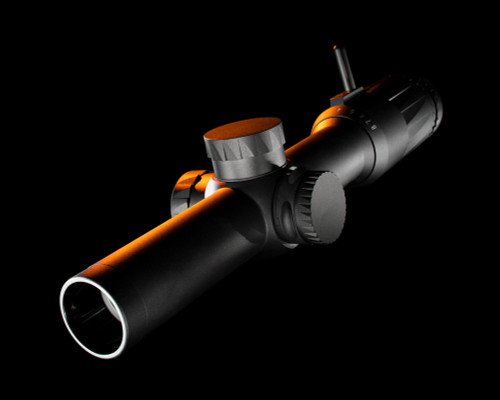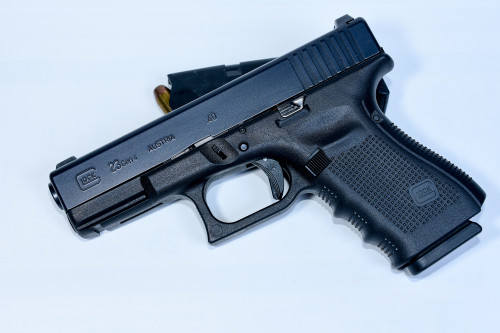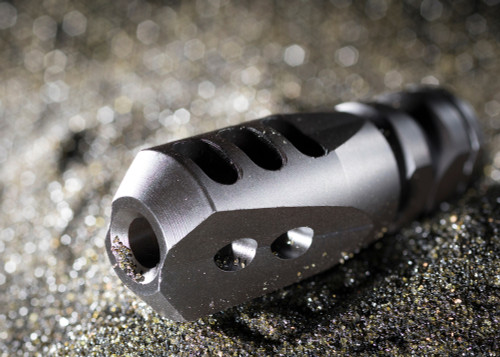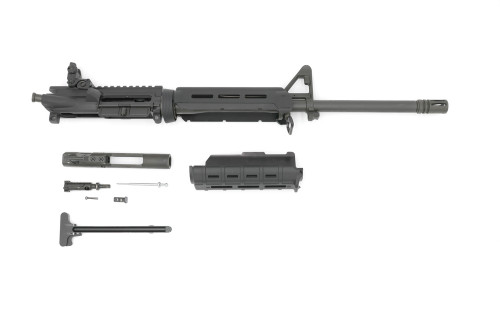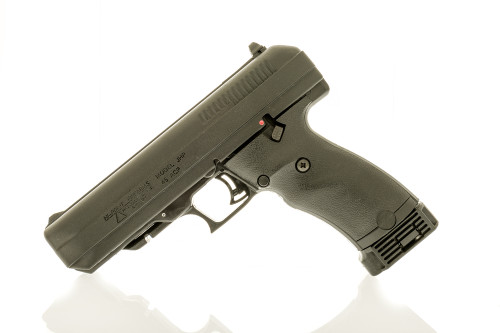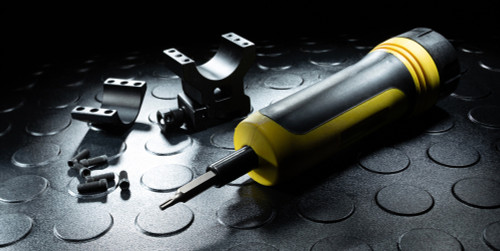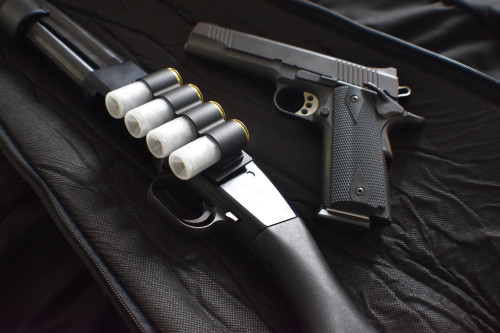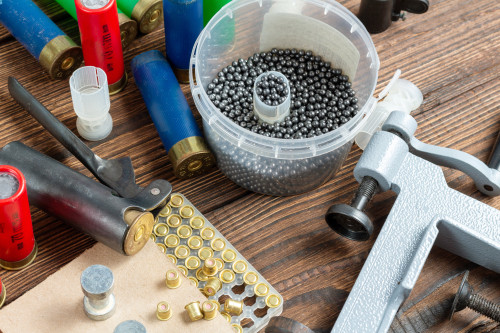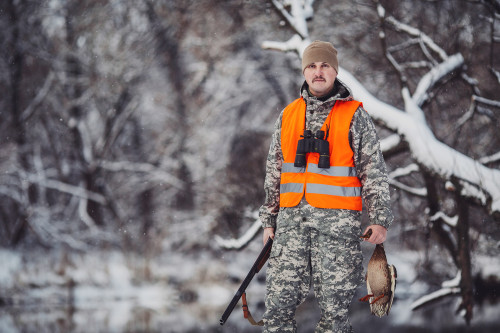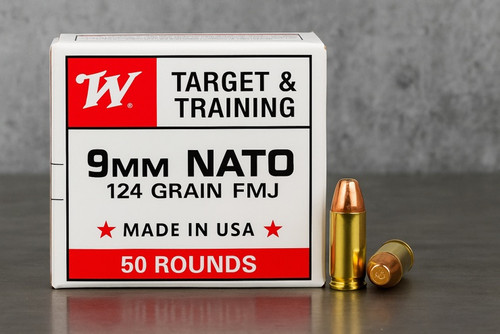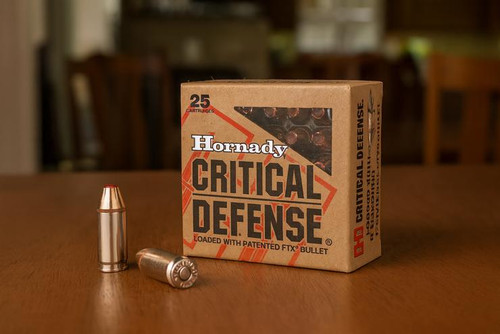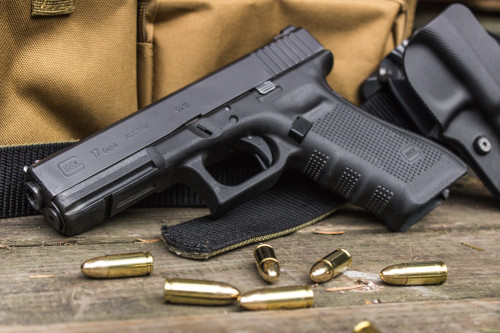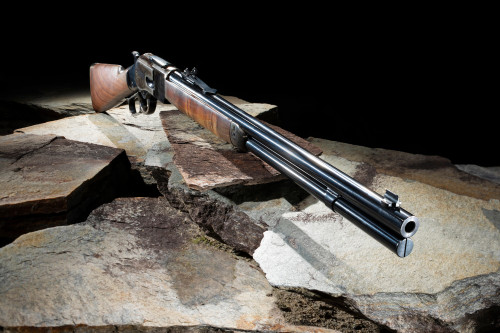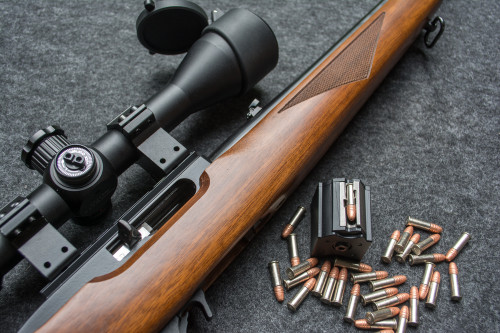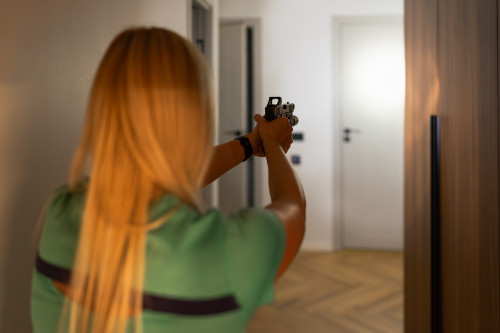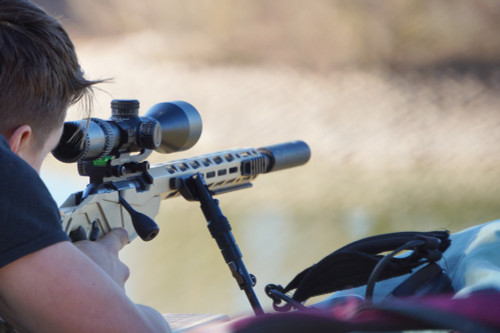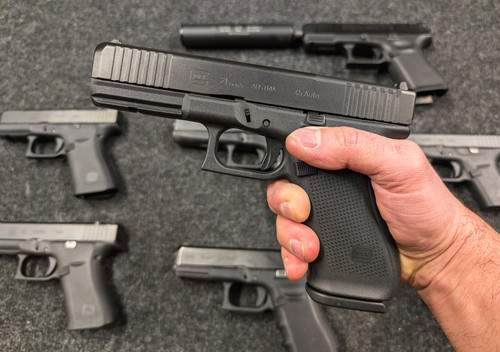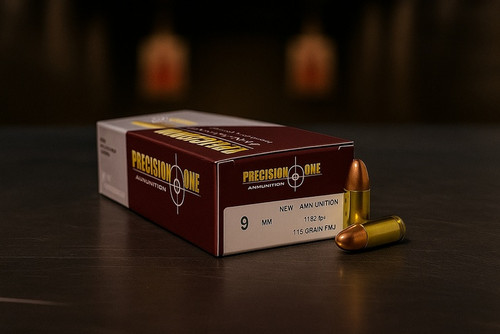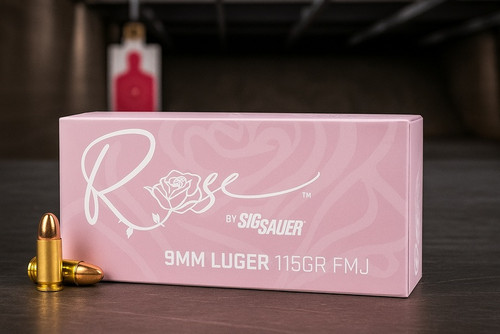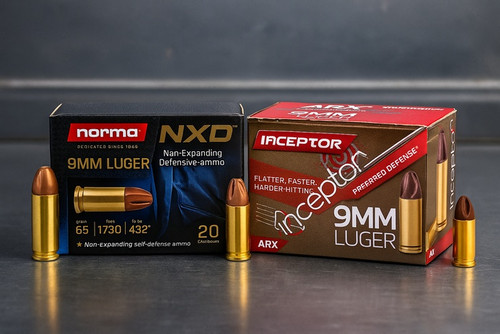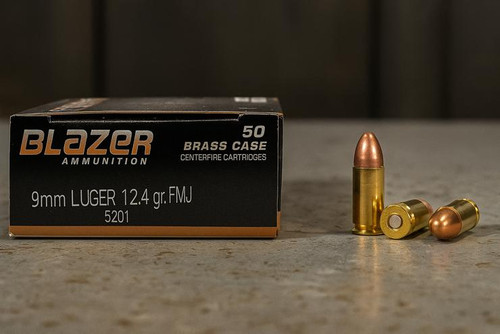Semi-automatic shotguns represent a significant advancement in firearm technology. These modern marvels offer faster follow-up shots and reduced recoil compared to traditional pump-action models. From competitive clay shooting to home defense and hunting, semi-auto shotguns excel in various applications.
How Semi-Auto Shotguns Work
Semi-automatic shotguns represent a marvel of firearm engineering. These firearms operate through two distinct systems: gas-operated and inertia-driven mechanisms. Each system brings its own advantages to the table, making them suitable for different shooting styles and preferences.
Gas-operated systems harness the expanding gases from fired shells to cycle the action. Think of it like recycling the energy that would otherwise be wasted. Small ports in the barrel capture these high-pressure gases. The captured gas travels through dedicated channels to power the action. This system effectively reduces felt recoil by using energy that would normally transfer to your shoulder.
The gas system's operation sequence starts when you pull the trigger. Propellant gases flow through barrel ports into a gas cylinder. These gases push against a piston, which moves the bolt backward. The backward motion performs three crucial functions: ejecting the spent shell, cocking the hammer, and compressing the action spring. As the action spring decompresses, it pushes the bolt forward, picking up and chambering a fresh round.
Inertia systems take a different approach, relying on the shotgun's backward movement upon firing. This clever design uses the gun's natural recoil to cycle the action. A heavy bolt spring compresses during recoil, storing energy like a compressed coil. The spring then releases this energy, driving the bolt backward to eject the spent shell and forward to load a new round.
The beauty of inertia systems lies in their simplicity. With fewer moving parts than gas systems, they stay cleaner longer and require less maintenance. This design proves particularly effective in harsh conditions where dirt and debris might challenge a gas system's reliability.
Pros/Cons of Semi-Auto Shotguns

Pros:
- Rapid-fire capability enables quick follow-up shots
- Reduced recoil makes shooting more comfortable
- Simple operation requires minimal manipulation between shots
- Better suited for competitive shooting sports
Cons:
- More expensive than pump-action alternatives
- Regular maintenance needed for reliable operation
- Some models struggle with light-load ammunition
- Complex mechanisms require thorough cleaning
Pump-Action vs. Semi-Auto
Pump-action shotguns represent the tried-and-true workhorses of the shotgun world. These traditional designs excel in reliability and simplicity. The manual cycling action means fewer moving parts to maintain or malfunction. Their lower price point makes them an attractive option for many shooters.
The beauty of pump actions lies in their versatility with ammunition. From light target loads to heavy magnums, these shotguns cycle whatever you feed them. The manual operation also allows for unique tactical advantages, such as selecting different shell types on the fly.
Semi-automatic shotguns bring speed and efficiency to the shooting experience. Their autoloading capability reduces split times between shots significantly. This rapid-fire capability proves particularly valuable in competitive shooting sports and defensive situations. The gas operation or inertia systems handle the cycling process, letting shooters focus entirely on target acquisition.
Recoil management sets semi-autos apart from their pump-action cousins. The autoloading mechanism spreads recoil impulse over a longer period, resulting in less felt recoil. This reduced recoil helps maintain sight picture and improves accuracy during rapid follow-up shots.
How To Choose a Semi-Auto Shotgun
Several important factors come into play when picking a semi-auto shotgun. First, is the gauge selection - this affects both recoil and ammo costs. Most shooters go with a 12-gauge for its versatility and wide ammo selection. If you're smaller in frame, a 20-gauge might be a better fit since it has less recoil.
Barrel length is another key factor to consider. Long barrels around 26-28 inches work great for clay shooting and hunting. They help you track moving targets better and pattern more consistently. For home defense or tactical use, shorter 18.5-21 inch barrels make the firearm easier to handle indoors.
The way a shotgun balances can really impact how it handles. A front-heavy gun swings nicely but can be slow to move between targets. Well-balanced shotguns point more naturally and move more easily. The type of stock also affects how the gun fits against your shoulder.
An operating system that suits your needs is also another important criteria. Gas-operated shotguns generally have less recoil and work better with light loads. Inertia systems stay cleaner and handle tough conditions better. Each type needs different maintenance and performs differently.
Magazine capacity depends on what you'll use the gun for. Competition guns often hold 8-10 rounds in extended tubes. Hunting models usually have smaller magazines to meet hunting laws. Check local regulations and aftermarket options when considering capacity needs.

FEDERAL HIGH OVERALL 12GA 2.75" #9 25RD BOX
$12.49
at Pro Armory
Prices accurate at time of writing
Review of the 7 Best Semi-Auto Shotguns
Benelli M4: Best Tactical Shotgun

The Benelli M4 stands as the gold standard in tactical shotguns. This battle-proven design serves as the U.S. Marine Corps' M1014 Joint Service combat shotgun. Its reputation for reliability spans across military, law enforcement, and civilian applications.
The M4's Auto-Regulating Gas-Operated (ARGO) system sets it apart from traditional gas-operated shotguns. This innovative system provides consistent cycling across various ammunition types. The dual-piston design reduces carbon buildup and maintains reliability between cleanings.
Combat-ready features include ghost ring sights and a Picatinny rail for optics mounting. The controls remain accessible and intuitive under stress. Premium materials and construction ensure lasting durability in harsh conditions.
The shotgun's ergonomic design promotes quick target acquisition and natural pointing. Its moderate weight helps manage recoil without sacrificing mobility. The chrome-lined barrel resists wear and corrosion through thousands of rounds.
Price: $1,899
Specifications:
- Gauge: 12 ga
- Action: Semi-auto, gas-operated
- Barrel Length: 18.5"
- Capacity: 5+1
- Weight: 7.8 lbs
- Length of Pull: 14.38"
Features:
- ARGO gas system
- Ghost ring sights
- Picatinny top rail
- Chrome-lined barrel
- Tactical pistol grip stock
Pros:
- Exceptional reliability
- Smooth action
- Moderate recoil
- Extensive aftermarket support
- Battle-proven design
Cons:
- Premium price point
- Expensive accessories
- Limited standard capacity
Beretta A300 Ultima Patrol: Best Value

The Beretta A300 Ultima Patrol brings premium features to an accessible price point. This gas-operated shotgun builds on Beretta's legendary reliability reputation. The design incorporates feedback from both civilian and law enforcement users.
Modern features include enlarged controls and a user-friendly loading port. The shotgun's lightweight design promotes quick handling and reduced fatigue during extended use. The gas system effectively manages recoil across various ammunition types.
M-LOK slots on the forend provide versatile accessory mounting options. The included ghost ring sights offer quick target acquisition in various lighting conditions. The oversized charging handle ensures positive manipulation under stress.
The A300's simplified internal design maintains reliability while reducing manufacturing costs. This approach delivers exceptional value without compromising core performance. The platform proves equally capable in home defense and competitive shooting roles.
Price: $979
Specifications:
- Gauge: 12 ga
- Action: Semi-auto, gas-operated
- Barrel Length: 19.1"
- Capacity: 7+1
- Weight: 7.1 lbs
- Length of Pull: 13"
Features:
- Enlarged controls
- Picatinny top rail
- M-LOK accessory slots
- Ghost ring sights
- Extended magazine tube
Pros:
- Excellent price-to-performance ratio
- Lightweight design
- Easy accessory mounting
- Reliable cycling
Cons:
- Basic rear sling mount
- Limited aftermarket support
- Standard bolt design
Beretta 1301 Tactical Mod 2: Fastest Semi-Auto Shotgun

The Beretta 1301 Tactical revolutionizes semi-auto shotgun performance. Its B-LINK gas system cycles 36% faster than traditional designs. This speed advantage translates directly to improved split times and target transitions.
Advanced ergonomics complement the lightning-fast action. The oversized charging handle and bolt release promote positive manipulation. The enlarged loading port speeds up reloading under pressure.
The shotgun's lightweight design enhances mobility without compromising stability. Premium materials ensure consistent performance in demanding conditions. The chrome-lined barrel maintains accuracy through high round counts.
Multiple accessory mounting options support modern tactical setups. The improved Pro-Lifter ensures smooth feeding with various ammunition types. The platform's reliability makes it suitable for both competition and defensive applications.
Price: $1,699
Specifications:
- Gauge: 12 ga
- Action: Semi-auto, gas-operated
- Barrel Length: 18.5"
- Capacity: 7+1
- Weight: 6.7 lbs
- Length of Pull: 13"
Features:
- B-LINK gas system
- Enhanced Pro-Lifter
- M-LOK slots
- Picatinny rail
- Oversized controls
Pros:
- Industry-leading cycle speed
- Excellent ergonomics
- Reliable feeding
- Lightweight design
Cons:
- Higher price point
- Limited color options
- Specific maintenance requirements
Mossberg 940 Pro Tactical: Best Ergonomics

Mossberg 940 Pro Tactical is a shotgun that takes everything great about the 930 and makes it even better. Jerry Miculek, one of the world's fastest shooters, helped develop this beast. That kind of input shows in every aspect of its design.
This shotgun can be your reliable training partner. The improved gas system doesn't just cycle rounds, it practically dances through them. And recoil? It's more like a gentle push than the usual kick you'd expect from a 12-gauge.
Loading shells becomes a breeze thanks to the beveled loading port. No more pinched fingers or awkward fumbling during reloads. The extended elevator makes a real difference here, especially when you're moving fast or wearing gloves.
They've also added an M-LOK slot to the barrel clamp. That means you can easily attach lights, lasers, or other gadgets without any special tools. Plus, it's ready for modern optics with its Shield RMSc mounting pattern. Additionally, it includes adapter plates for mounting RMR, Docter, and Leupold accessories
Price: $841
Specifications:
- Gauge: 12 ga
- Action: Semi-auto, gas-operated
- Barrel Length: 18.5"
- Capacity: 7+1
- Weight: 7.5 lbs
- Length of Pull: 12.5" 14.25"
Features:
- Shield RMSc optics mount
- Adjustable length of pull
- Bright fiber optic front sight
- Enhanced loading port
- Quick-cycling gas system
Pros:
- Smooth, reliable action
- Excellent ergonomics
- Softer felt recoil
- Easy customization options
Cons:
- No included top rail
- Limited aftermarket support
- Higher maintenance needs
Stoeger M3K Freedom: Best for 3-Gun

The Stoeger M3K Freedom offers great value for competitive shooting. Built with input from Benelli, this shotgun delivers reliable performance at a reasonable price point. It's become a popular choice for those getting into 3-gun competitions.
The inertia-driven system operates smoothly and consistently. Each round cycles reliably through the action, making follow-up shots easy and predictable. The design keeps maintenance simple and helps the gun run well in various conditions.
The standard features make it competition-ready from the start. A 10-round magazine tube provides enough capacity for most stages. The enlarged controls help with quick reloads and manipulation during matches.
This shotgun performs well beyond its price range. The fiber optic sight provides clear target acquisition, and the extended chokes help customize patterns. These features make it a practical choice for both new and experienced competition shooters.
Price: $626
Specifications:
- Gauge: 12 ga
- Action: Semi-auto, inertia-driven
- Barrel Length: 24"
- Capacity: 10+1
- Weight: 7.3 lbs
- Length of Pull: 14.38"
Features:
- Competition-ready enlarged controls
- Extended magazine tube
- Fiber optic front sight
- Extended cylinder choke
- Adjustable drop and cast
- Optimized loading port
- Quick-release bolt latch
Pros:
- Outstanding value for competition use
- Reliable inertia-driven system
- Competition-ready out of the box
- Large aftermarket support
- Smooth cycling action
Cons:
- Slightly heavier recoil than gas systems
- Basic finish quality
- Limited color options
- May need break-in period
Beretta A400 XCEL Sporting: Best for Clays

The Beretta A400 XCEL Sporting stands out as a premium choice for clay shooting. This shotgun brings together traditional Italian craftsmanship and modern technology. The result is a smooth-cycling shotgun that performs consistently on the range.
The B-LINK gas system offers notable improvements in cycling speed. It operates 36% faster than standard systems, which helps when shooting doubles. The Kick-Off recoil system effectively reduces the typical 12-gauge recoil, making long sessions more comfortable.
The carbon fiber vent rib serves a practical purpose beyond aesthetics. It manages heat buildup during extended shooting sessions and maintains a clear sight picture. The redesigned loading port improves reload speed and efficiency between stations.
Beretta's Steelium barrel technology delivers reliable performance. The tri-alloy steel construction produces consistent patterns shot after shot. Combined with the extended choke tubes, this shotgun handles clay shooting demands effectively.
Price: $2,219
Specifications:
- Gauge: 12 ga
- Action: Semi-auto, gas-operated
- Barrel Length: 28"
- Capacity: 3+1
- Weight: 7.7 lbs
- Length of pull: 14.5"
Features:
- Carbon fiber vent rib
- Kick-Off recoil reduction
- B-LINK gas system
- Steelium barrel
- Competition-ready controls
Pros:
- Outstanding recoil management
- Lightning-fast cycling
- Superior balance
- Tournament-proven reliability
Cons:
- Premium price tag
- Specialized for clay sports
- Complex maintenance schedule
Browning A5 Hunter: Best for Hunting

The Browning A5 Hunter takes the classic Auto-5 design into the modern era. The familiar humpback receiver stays true to the original, but modern technology updates every other aspect. The A5 system is a nod to the original Browning Auto-5, which was the first successful semi-automatic shotgun designed by John Moses Browning in the early 20th century. The Auto-5, often referred to as the "Humpback" due to its distinctive receiver shape, revolutionized the shotgun market with its innovative recoil-operated action. This combination creates a reliable hunting companion that honors its heritage.
The new Kinematic Drive system makes ammunition selection simple. Load up anything from light target loads to heavy magnums the A5 cycles them all reliably. The system runs smoothly without requiring adjustments for different shell types.
The A5 Hunter balances traditional looks with practical features. Its walnut stock looks great and performs well in the field. The weight sits right around 6 pounds, making it comfortable to carry on long hunting trips.
The practical features make this shotgun ready for serious hunting. A bright fiber optic front sight helps with target acquisition in dim conditions. The durable finish handles rough weather and brush without showing wear and therefore it is perfect for real hunting conditions.
Price: $1,679
Specifications:
- Gauge: 12 ga, 20 ga
- Action: Semi-auto, inertia-driven
- Barrel Length: 26" 28"
- Capacity: 4+1
- Weight: 5.6 lbs 6.8 lbs
- Length of pull: 14.25"
Features:
- Kinematic Drive system
- Premium walnut stock
- Fiber optic front sight
- Invector-DS choke system
- Weather-resistant finish
Pros:
- Classic styling with modern performance
- Excellent handling characteristics
- Versatile load compatibility
- Outstanding build quality
Cons:
- Higher price point
- Heavier swing weight
- Limited tactical applications
How to Maintain Your Semi-Auto Shotgun

Taking care of your semi-auto shotgun isn't rocket science, but it does require attention to detail. Regular maintenance keeps your firearm running smoothly and extends its life. Let's break down the essential care steps.
Start with basic cleaning after every shooting session. Remove any carbon buildup from the gas system or inertia mechanism. Pay special attention to the barrel, chamber, and action. A clean shotgun is a reliable shotgun.
The gas system needs extra attention, especially in gas-operated models. Carbon and debris can accumulate quickly, affecting reliability. Break down the gas system components according to your owner's manual. Clean each part thoroughly and lubricate as specified.
Moving parts deserve regular inspection. Check the recoil spring, bolt, and carrier for wear or damage. Replace worn parts before they cause problems. A little preventive maintenance saves money and prevents malfunctions down the road.
Conclusion
Semi-auto shotguns have revolutionized both competitive shooting and hunting. Each model we've covered brings something unique to the table. The Benelli M4 dominates tactical applications, while the Beretta A400 XCEL rules the clay fields.
For budget-conscious shooters, the Stoeger M3K Freedom and Beretta A300 Ultima Patrol deliver outstanding value. The Mossberg 940 Pro Tactical brings professional-grade features to a broader audience. The Beretta 1301 sets speed records, and the Browning A5 Hunter honors tradition while embracing innovation.
Choose based on your primary needs and budget. Consider factors like intended use, maintenance requirements, and ammunition compatibility. Remember the best shotgun is the one that fits your shooting style and purpose.
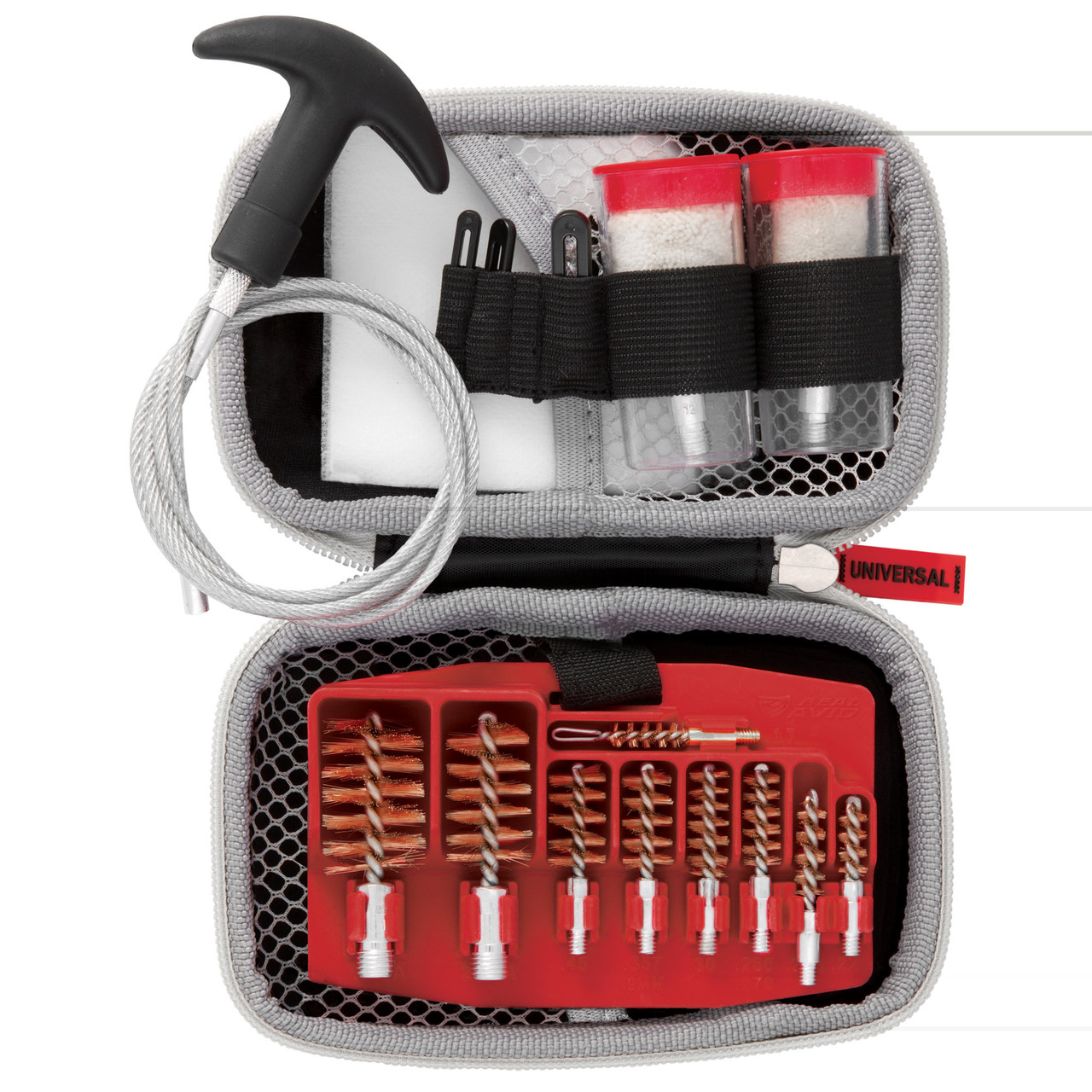
Real Avid Gun Boss Univrsl Cable Kit
$34.99
at Pro Armory
Prices accurate at time of writing
FAQs
Are semi-auto shotguns reliable enough for home defense?
Modern semi-auto shotguns offer excellent reliability when properly maintained. Quality models like the Benelli M4 and Beretta 1301 Tactical provide consistent operation under stress. Regular cleaning and proper ammunition selection ensure dependable performance in defensive situations.
How often should I clean my semi-auto shotgun?
Clean your semi-auto shotgun after every shooting session. Gas-operated models require more frequent cleaning than inertia-driven systems. Heavy use or exposure to harsh conditions may necessitate additional maintenance sessions.
Can semi-auto shotguns handle all types of ammunition?
Most modern semi-autos handle a wide range of loads, but check your owner's manual for specifications. Gas-operated systems typically handle light loads better than inertia systems. Premium models often offer broader ammunition compatibility.
What's the advantage of an inertia system over gas operation?
Inertia systems stay cleaner longer and require less maintenance than gas systems. They offer simpler designs with fewer parts to maintain. However, they typically produce more felt recoil and may struggle with very light loads.
Are semi-auto shotguns worth the extra cost over pump actions?
Semi-auto shotguns justify their higher price through reduced recoil and faster follow-up shots. Competition shooters and high-volume hunters often find the investment worthwhile. The choice depends on your shooting needs and budget priorities.
What should I look for when buying my first semi-auto shotgun?
Focus on reliability, ergonomics, and intended use. Consider maintenance requirements and ammunition compatibility. Start with established brands like Beretta, Mossberg, or Stoeger. The A300 Ultima Patrol offers an excellent entry point for new semi-auto shooters.



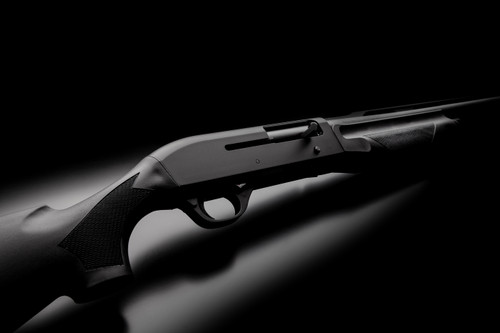
 Pro Armory Editorial Team
Pro Armory Editorial Team